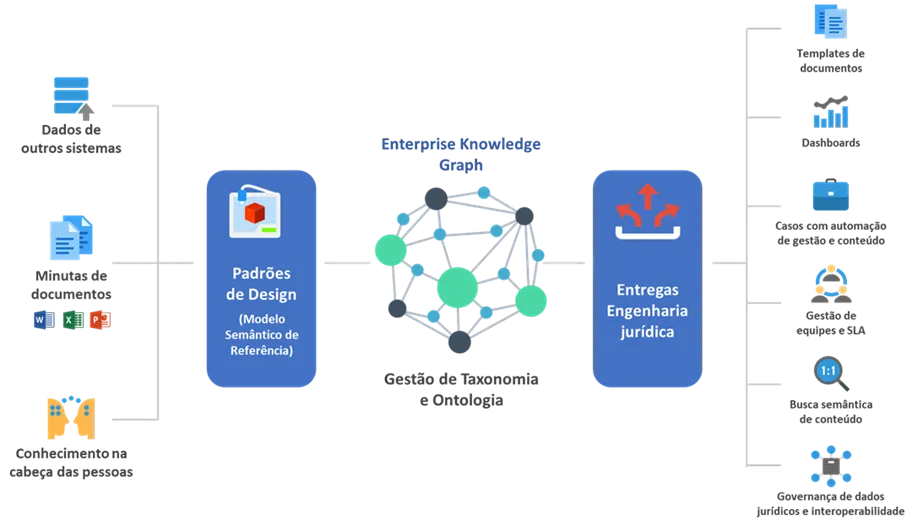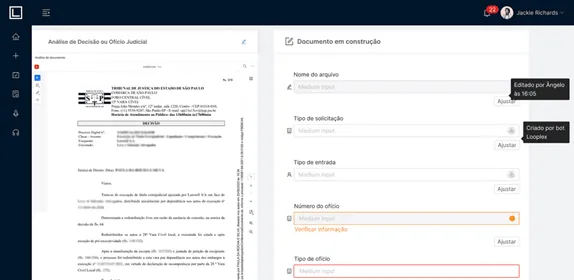Looplex Analyzer
Regardless practice area, volume of transactions, size of the organization and style of the work, legal departments and law firms deal with a multitude of documents.
These documents invariably constitute the inputs or “raw material” that lawyers need to analyze in order to produce their contracts, court filings, memoranda, reports, and other smart legal documents at Looplex.
The ability to methodically categorize data, reason about its content, and structure a document analysis of everything that is forwarded to the legal team is critical to have an intelligent decision-making and legal output production by the lawyer.
Challenges for Automated Data Extraction
The main challenge for automated data extraction is the variety of document types from which data must be obtained.
Not only is the context of each document different, but so is its structure; documents can be highly structured, such as Excel spreadsheets, invoices, an employee’s time sheet, docket records on courts’ websites, semi-structured, such as court certificates of pending lawsuits on docket, notices of tax infractions, “CDA” (Government’s Outstanding Debt Certificate) on tax collection lawsuits, registration forms before the Commercial Registrar etc.) or unstructured, such as court judgments, contracts, commercial proposals, expert reports etc.
AI-enabled data extraction tools can handle all these types of documents. Such tools use statistical methods, neural networks, decision trees, and rule-learning techniques to intelligently capture relevant data, regardless of its position in the source document. AI-based data extraction tools can be trained to collate data in a sensible way, which makes it suitable for post-processing operations.
Looplex Analyzer
Looplex Analyzer provides a set of artificial intelligence tools that performs Intelligent Document Processing (IDP). It combines data extraction with file management and orchestration through the interaction of AI technologies such as computer vision, machine learning, and natural language processing, to not only extract data, but also categorize, validate, and store it.
Looplex Analyzer uses those tools independently or in synergy to extract data from various types of documents and convert it into structured and meaningful information for the legal analysis of a case.
The document analysis process begins with collecting data from various sources and documents. This data can be collected from multiple channels and in different formats. OCRs, ICRs, and computer vision are used for document data capture. During this process, a scanned version of the document, or “digital twin,” is created for further processing.
The next step is the classification of elements such as names, quantities, identities, dates, etc. Data analysis involves human language processing, and therefore automating data extraction from documents involves the use of natural language processing (NLP) techniques such as Named Entity Recognition or NER), coreference resolution, relationship extraction, template filling, and semi-structured information extraction (tabular data such as forms, tables, etc.).

However, in order for this process to generate effective results, this intelligent document analysis uses a library of pre-trained extraction models that access the Looplex reference semantic model, thus obtaining a correspondence of patterns that help in the classification of the document.

The output delivered by Looplex Analyzer includes not only all relevant labeled data of those documents, but also useful and actionable metadata about what has been analyzed, thus providing a view of the larger context of relevance of what passes through the legal professional’s desk and data organization for jurimetrics and legal analytics.
Assisted Document Analysis
Once the data analysis is done by the Looplex Analyzer, the result of this processing is loaded into the Looplex semantic database, and returned to the user in the Assisted Document Analysis interface, integrated in the Looplex Cases case file or in a Looplex intelligent document generation template.

In addition, the result of the analysis can include automated workflow processes such as sending emails, RPA (Robotic Process Automation) integrations, API data exchange with other external systems, etc.

The automated data extraction and intelligent processing of legal documents made by Looplex Analyzer lightens the workload of lawyers and paralegals, increases productivity and provides competitive advantages both in terms of results and satisfaction of their clients.

